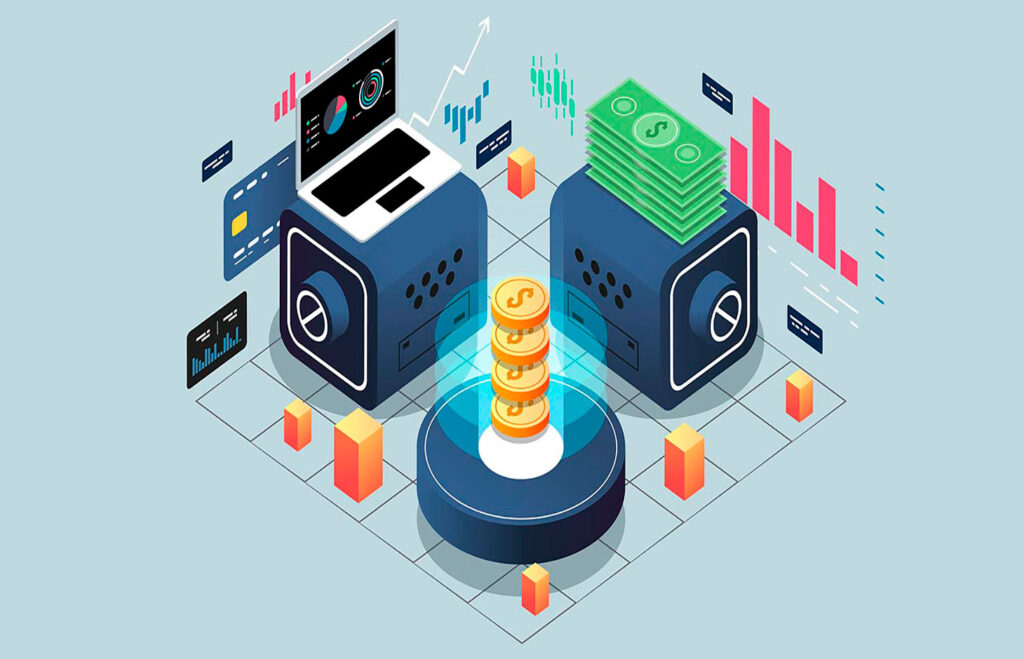Running a successful subscription business means managing many moving parts.
You work hard to pull in and retain great customers, as well as provide a product and support those customers are going to love. Along the way there are issues to resolve, upgrades to make, and new features to introduce to keep ahead of the competition.
If you do all of this well, your customers enjoy a seamless experience that provides value for their businesses. And in exchange, they provide your business with reliable cash flow in the form of recurring payments.
At the end of the day though, you can only keep the successful cycle going so long as that last part happens. You’ve got to get paid—and paid reliably—for your subscription business to operate at its best and keep on growing.
By optimizing the recurring payment process for your customers, from beginning to end, you enable your business to scale.
Here’s how.
1. The right payment gateway creates simplicity from the start.
Payment gateways are the paths through which your income travels. The right one keeps payments and revenue moving smoothly. The wrong one, by contrast, can create extra steps and barriers that stifle your cash flow.
Some gateways are limited in terms of the payment methods they accept. From credit cards and ACH to options like Apple Pay and Google Pay, make sure your gateway of choice accepts every payment type to give your customers options.
Integration is another key factor when it comes to choosing the right payment gateway. You need your gateway to connect with all the tools you need under one dashboard.
Adaptive subscription billing platforms integrate directly with modern agile gateways to offer payment solutions that truly bolster your business.
For example, Stax Bill’s integrated payments solution provides your business with a single view of your entire billing and payments process—rather than forcing you to work from two separate platforms. This means integrated visibility into settlements so you can stay on top of your cash flow.
Unrestricted payment options and integrated tracking capability, along with automated credit card updating as well, ensures your business gets paid without issue and you can keep clear tabs on the process from start to finish.
The right payment gateway makes a difference.
2. Automating your collections keeps recurring payments on track.
It’s impossible to scale competitively without automation these days. Manually collecting payments, updating expired cards, and retrying failed payments become unmanageable once your subscription business reaches a certain size—usually by a couple hundred customers.
This isn’t just about how much time your team spends taking action on these issues, either. It’s also about how much time you spend following up when things don’t go smoothly, as well as how much money is lost waiting around and deciding what to do with an unresponsive customer.
Web app support provider Starting & Sustaining found up to 50% of total churn in B2B businesses can be attributed to failed payments, with 10-15% of recurring charges failing overall.
That’s a problem subscription business leaders can’t ignore.
Manual collections processes create all kinds of revenue leakage nightmares that aren’t conducive to scaling. From missed and failed collection attempts to expired cards and churn, there’s simply too much opportunity for revenue to slip through the cracks.
For a subscription business that relies on recurring revenue, automatically collecting recurring payments means optimizing revenue.
3. Auto-communication around recurring payments keeps customers in good standing.
Adding automation to your collections process is game-changing, but you also need to be able to automate your communication with customers about what’s happening around their payments.
After all, if your billing and payments solution can notice 25 customers missed a payment, it should also be able to send an automated dunning email or text to those customers letting them know what happened.
Letting customers know they missed a payment is the first step toward getting them to take action.
The second step, of course, is making it easy to do so.
- The payment-related communications you send to your customers should link them directly to a self-service portal where they can make a payment, update their payment details, or take any other necessary action. This saves you and your team a lot of manual work, and most customers prefer to take action on their own anyways—we’ll dig into that later on.
- Automated communication helps your customers keep their payment methods up-to-date and, in exchange, enjoy seamless and uninterrupted service.
This kind of dunning management prevents involuntary churn, which SaaS growth marketing agency CoBloom recently found is more damaging to subscription businesses than previously thought.
Contrary to the popular belief that an annual churn rate of 5-7% is pretty standard across SaaS businesses, CoBloom found most actually experience monthly churn rates of at least 10%. Many respondents to its survey cited monthly churn rates of more than 15%—in fact, this was the most common response!
If you’re losing 15% of your customers every month, your subscription business is in trouble. Automating payment communications helps keep that number low so you can scale.
4. Automated invoicing saves time and keeps customers informed.
We’ve talked a lot about the benefits of automation, but we’re not done yet.
In addition to payments and related communication, there are huge benefits to automating the entire recurring invoicing process.
- Predictable invoicing clarifies the details around payment for customers, and when collections are automated it confirms successful payment has been made.
- Some of the most common invoicing mistakes—such as forgetting to invoice, not following up on unpaid invoices, and sending invoices to the wrong people or department—are also easily avoided with invoice automation.
- Automated billing software pulls all the necessary up-to-date details from your customers’ accounts to keep your recurring invoicing process rolling along seamlessly.
- And businesses that switch from manual to automated invoicing often save as much as 40 to 80 hours of time every month. This is obviously a huge time savings that makes it possible to keep your team’s focus on more strategic tasks.
The advantages play out both for your business and your customers too.
As your subscription business scales, it’s easy to become overwhelmed by your growing customer base and each account’s unique contract. With consistent branding and invoice scheduling, customers receive their invoices reliably and with the detail they need to feel confident in your business. This builds trust.
Paired with automatic notifications of received payments, manual invoicing simply can’t compete at scale.
With optimized invoicing and a smoother customer experience, you maintain healthy subscriber retention and help to ensure recurring revenue for growth.
5. Self-service portals enable customers to manage their own payment details.
Sixty-seven percent of users prefer self-service functionality, and that’s great news for subscription businesses. Get ready to see your number of support tickets go down!
Modern recurring payment and billing solutions provide self-service portals that enable customers to update their account details and payment information as well as upgrade and downgrade plans, and more.
When a customer knows their card is expiring or changing, they can use the portal to update card information on their own. That means portals help prevent payment failures from happening in the first place.
Self-service functionality also simplifies subscription management and the customer experience in other ways. Because users have more power to take action without reaching out to support, it streamlines their experience with your business without putting additional demand on your team.
It’s a win-win!
Subscription businesses benefit from recurring payment optimization
An efficient, holistic payment experience ensures things go smoothly for customers on the front-end and revenue collections is seamless on the back-end. And of course, all that extra efficiency and automation makes it a whole lot easier for your subscription business to continue on its growth journey at full speed.
If you’re looking to optimize your recurring payment process, it’s probably time to look into platforms designed to do exactly that. Recurring billing platforms like Stax Bill automate payments, invoicing, communications, and more so your team can focus on providing a great product and strong support for your customers.
With a robust billing and payments partner dedicated to ensuring the entire process runs efficiently, accurately, and reliably, your business gains the scalability and cash flow assurance it needs for rapid growth.








